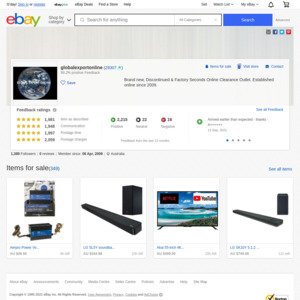Original PROGRAM20 20% off Selected Sellers on eBay Deal Post
Cheap subwoofer option with advanced controls (level/cross-over/phase).
For those who may not want to spend double what they paid for their soundbar/bookshelf’s.
Discontinued product. Only 1 Year manufactures warranty according to Sherwood.
User Manual Link + Official website archive provided by alvian:
https://www.appliancesonline.com.au/public/manuals/Sherwood-…
Lack of after sale support (manufacturer warranty/product support) so best you will get is a refund.
10-inch woofer powered by slightly under-powered amp.
This enclosure is big (not in a good way) 40x40x40cm, makes it harder to place.
Solid sounding subwoofer if you aren’t pushing it (source: forums .)
Crossed this off my list, too large a box, too large a woofer, lack of after sale support.






not enough doof doof